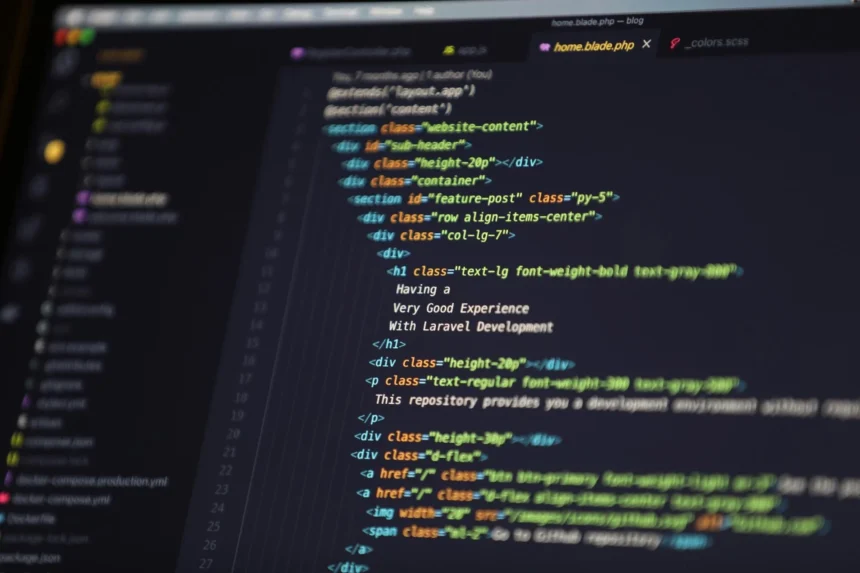Laravel has emerged as a go-to framework for developers seeking a robust solution for web application development. Its expressive syntax and cohesive ecosystem make it an attractive option for small-scale projects and enterprise-level applications. Favored for its elegance and simplicity, Laravel turns the usually daunting task of Laravel web development into a more manageable and enjoyable experience. In this rapidly evolving digital world, having tools that streamline the development process while maintaining high-performance standards is crucial. Below, we delve into the benefits and capabilities of Laravel to understand why it stands out in the crowded field of web development frameworks.
Understanding Laravel and Its Place in Modern Web Development

Laravel’s rise to prominence is no accident; it results from addressing real-world development problems with an articulate yet practical approach. Since its introduction in 2011, Laravel has steadily climbed to become one of the most popular PHP frameworks. It excels in tasks ranging from simple web services to complex API platforms, making it a versatile tool in a developer’s arsenal.
At the heart of Laravel’s philosophy is the desire to make web development enjoyable for the developer without sacrificing application functionality. This is achieved by simplifying common tasks such as routing, sessions, caching, and authentication. Laravel’s elegant syntax and emphasis on clean code make it highly readable and maintainable, which is paramount for long-term projects.
One reason Laravel is considered advanced is its ability to scale with the complexity of the projects it handles. With a wide range of features, such as an expressive database ORM, a painless routing engine, and a powerful queue library, Laravel provides an infrastructure that supports robust application development. Its built-in tools for testing and debugging further reinforce its position as a comprehensive framework.
Furthermore, Laravel’s active community and continuous updates play a key role in keeping the framework at the forefront of web development technologies. With extensive documentation and a plethora of learning resources, Laravel lowers the barrier to entry for new developers while continually challenging seasoned professionals with its advanced features.
The MVC Architecture: How Laravel Streamlines Development

The Model-View-Controller (MVC) architectural pattern forms the backbone of Laravel and contributes to its organized, efficient workflow. By separating the business logic from the UI and database interactions, Laravel encourages clean coding practices and easier maintenance. The MVC structure simplifies collaboration among developers who can work on different aspects of the application simultaneously without causing disruptions.
Models in Laravel represent the application’s data structure and are used to interact with the database. Views handle the presentation layer and are responsible for displaying data to the user, while Controllers are the intermediary that processes commands, make calls to models, and load views. This clear-cut structure allows for modular development and clean APIs.
The MVC architecture allows developers to leverage Laravel’s built-in functions to enhance performance and scalability. The framework’s routing configuration supports MVC principles, streamlining URL mapping to specific controllers and actions. This consistency makes applications built using Laravel predictable and easy to manage.
Furthermore, by adopting MVC, Laravel facilitates the development of modular applications and reusable code. This not only enhances productivity but also makes code testing more straightforward. Automated testing, another core feature of Laravel, is significantly more practical within an MVC framework.
From Development to Deployment: Laravel’s Tools and Ecosystem for Web Apps
Laravel supports developers throughout the entire lifecycle of a web application. From local development tools like Laravel Homestead, which provides a pre-packaged Vagrant box for development environments, to Laravel Vapor, a serverless deployment platform, Laravel equips developers with the necessary tools to build, test, and deploy applications easily.
Laravel’s use of Composer streamlines packaging and dependency management. It efficiently handles package versions and necessary dependencies. Laravel Forge provides server management and site deployment, automating application launch and further streamlining the production pipeline.
Maintaining quality code is also simplified with Laravel. It supports various testing options, including unit, feature, and browser tests integrated into the framework. The Laravel Dusk package even enables browser testing with a real Chrome browser, providing developers with powerful testing capabilities that simulate user interactions.
Altogether, Laravel offers a comprehensive and streamlined approach to web development, making it a powerful tool for beginners and experienced developers. Its elegant syntax, robust features, and supportive community make it a top choice for building scalable and maintainable web applications.







